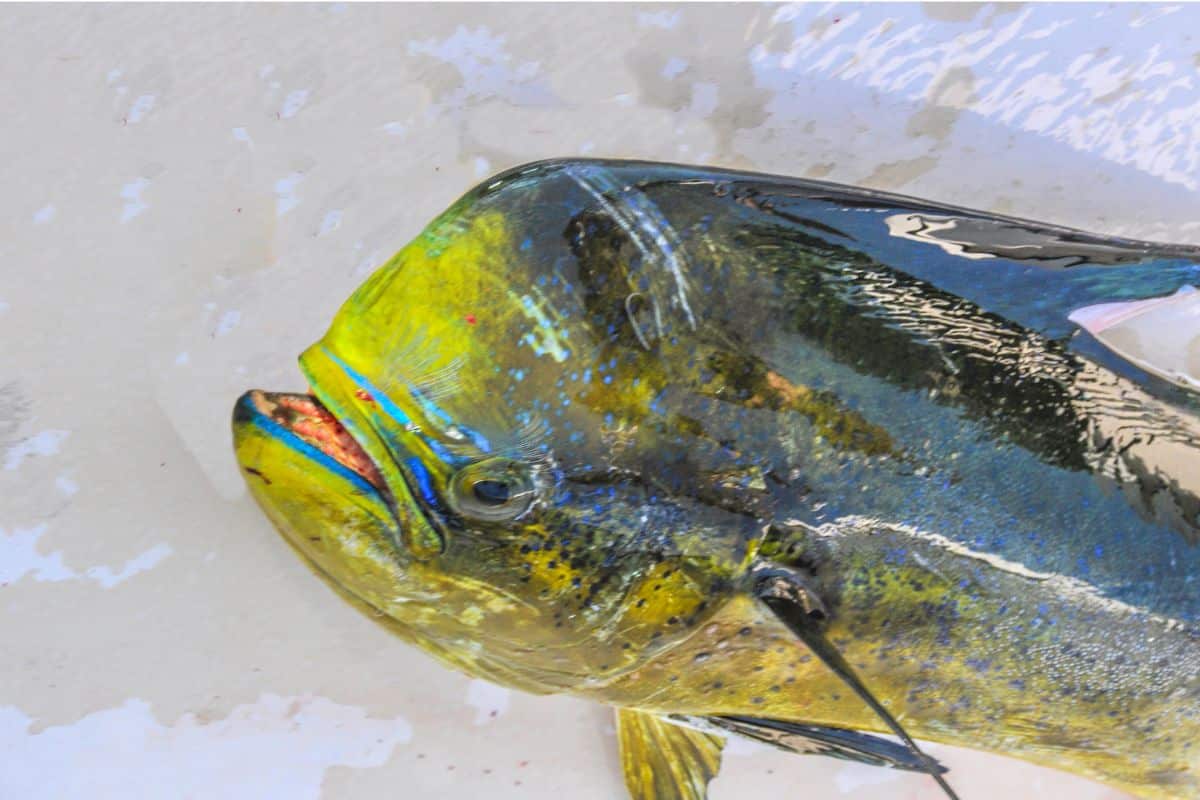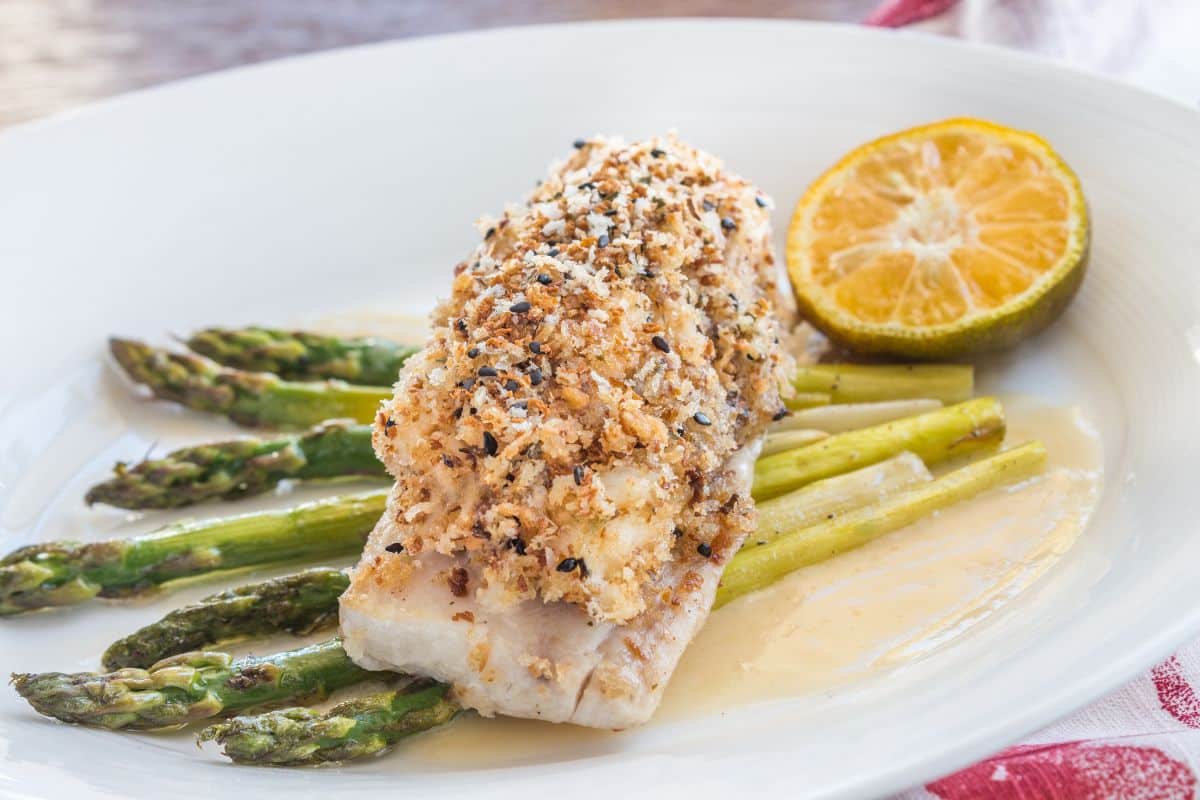There are many different types of seafood and the sheer number of delicious options can often leave us confused about the differences between them.

One such query that often arises is whether mahi-mahi is actually tuna. They’re both popular types of seafood and are commonly confused.
The confusion stems from the fact that both fish are commonly found on menus and share certain similarities. However, they are not the same and have very different appearances, flavors, and uses.
In this article, we will delve into the intriguing world of mahi-mahi and tuna, exploring their distinct characteristics, differences in taste, texture, and appearance, as well as their respective culinary uses.
Difference Between Mahi-Mahi And Tuna
The main difference between mahi-mahi and tuna is that they are two entirely different species of fish. They live in different waters and have different appearances. As food, they also taste different and have different textures.
Let’s take a closer look at the differences between the two fish.
All About Mahi-Mahi
The name mahi-mahi comes from Hawaiian where it means “very strong.” There are two different species of fish that are given the term mahi-mahi and they are also commonly known as dolphinfish.
Don’t let this second name confuse you, however, as the mahi-mahi is not related to dolphins in any way.
Mahi-mahi prefers to swim in shallow waters near the coastline. You can catch mahi-mahi in coastal areas and even in some rivers.
They can be identified by the greenish-blue coloring on the top of the body and the lighter shades of yellow, pink, or light blue underneath.
They’re relatively small fish as the average weight of a mahi-mahi is between 10 to 40 pounds.
All About Tuna
There isn’t one single fish that is called tuna. In fact, there are 15 different species of fish that can all be called tuna. These can vary greatly in size and weight but are all part of the thunnini tribe and the Scombridae (mackerel) family.
Sometimes, tuna is labeled to state which species it is. Some of the most common types of tuna are:
- Pacific bluefin tuna
- Southern bluefin tuna
- Yellowfin tuna
- Blackfin tuna
- Skipjack tuna
All tunas are saltwater fish and are found in warm seas, typically the open ocean. If you’re looking to fish for tuna, you will need to head out into the ocean and have some serious fishing gear.
Although they can vary in size, they all share characteristics of being dark blue on the top of their body and lighter colored underneath. The lighter colors can vary from species to species.
The average tuna is surprisingly large. It’s not unusual for an average tuna to weigh between 450 to 500 pounds. The Atlantic bluefin tuna is the largest fish in the tuna family and this giant can weigh up to 1,500 pounds (680kg)
How Does Mahi-Mahi Taste?
Mahi-mahi is characterized by its gentle, sweet flesh, which initially appears pinkish but becomes white during the cooking process. Its texture is notably lean, firm, and compact, distinguishing it from flaky varieties.
Despite its sturdiness, mahi-mahi also boasts a delicate and moist nature that enhances its overall flavor. Many people describe it as being a sweet fish when compared to other types of seafood.
How Does Tuna Taste?
The taste of tuna can vary significantly depending on the species, its form, and how it is prepared. However, there are some similarities regardless of these scenarios.
Tuna is well known for its meaty and dense nature and can offer an almost velvety, melt-in-your-mouth texture when consumed raw or rare. Fresh tuna tends to be sweet and briny, while preserved versions taste much fishier.
When combined with ingredients such as mayonnaise or cream, the sweetness and creaminess resurface, balancing out any overpowering fishiness.
These distinct attributes contribute to the versatile appeal of tuna, allowing it to be enjoyed in a multitude of culinary preparations.
How To Cook Mahi-Mahi

Mahi-mahi is a versatile fish so it can be cooked in several different ways. However, keep in mind that this is a lean fish, so be careful to avoid overcooking and drying out the fish.
Depending on the thickness of the filets, a mere three to four minutes per side will suffice.
If grilling the filets, it is recommended to leave the skin intact during the cooking process as this will help to keep the filets intact.
However, we recommend removing the tough skin before serving, as this remains resilient even after cooking. For skinless filets, a flat grilling basket can be utilized.
Most fileted mahi-mahi is bone-free, but if any bones are present, they tend to be large and elongated. While it is possible to cut them out before you cook the fish, it is generally easier to remove them after cooking.
We prefer broiling mahi-mahi but it can also be grilled, pan-fried, skewered, or steamed. When sliced into strips and battered, it even produces delectable tempura. Mahi-mahi serves as an excellent substitute in recipes that call for tilapia or catfish.
How To Cook Tuna
Tuna also lends itself to a wide array of cooking methods. It can be grilled, broiled, skewered, ground, seared, or baked.
However, some of the most exceptional ways to enjoy tuna involve minimal cooking as it tastes delicious raw or when lightly grilled. Be careful not to overcook tuna as it can dry out and become grainy.
Tuna also tastes great when preserved through techniques like smoking or salt curing. Canning it in oil or water opens up possibilities for tuna fish salad, tuna melts, and tuna casseroles.
Popular Mahi-Mahi Recipes
Mahi-mahi tastes great when served as a simple filet. It can be flavored with delicate flavors such as lemon to bring out the best flavors in the fish. It’s also commonly used in soups in Hawaii and can be ground down to make healthy burgers.
Popular Tuna Recipes
Tuna is very versatile. It’s often served as large steaks and is delicious when served raw as sushi or sashimi. Preserved tuna that has been mixed with oil or mayonnaise is often used in salads and sandwiches and it can be baked as part of a casserole.
Mahi-Mahi Vs Tuna Comparison Table
| Category | Mahi-Mahi | Tuna |
| Also known as | Dolphinfish | n/a |
| Number of species | 2 | 15 |
| Habitat | Shallow waters | Saltwater, open ocean, warm seas |
| Color | Greenish-blue on top, yellow, pink, or light blue underneath | Dark blue on top, lighter underneath |
| Average size | 10 to 40 pounds | 450 to 500 pounds |
| Taste | Mild, slightly sweet | Robust, stronger fish flavor |
| Best cooking methods | Broil, grill, pan-fry, steam, skewer | Grill, broil, skewer, grind, baked |
| Popular dishes | Filets, soup, burgers | Steaks, salads, casseroles, sashimi |
Nutritional Content Breakdown: Which One Is Healthier?
Now let’s take a look at the nutritional value of both mahi-mahi and tuna. For this table, we’re using a 3-ounce serving (85 grams) that is fresh and raw and hasn’t been prepared or cooked in any way.
As mahi-mahi and tuna are both animal products, servings can change slightly depending on the fish.
Fish is well-known for being a very healthy type of food and mahi-mahi and tuna are no different. They’re both relatively low in calories, however, tuna is slightly higher in calories than mahi-mahi.
They have very similar fat contents but mahi-mahi is higher in both sodium and cholesterol. In fact, mahi-mahi is twice as high in sodium and cholesterol as tuna. Neither fish has any fiber or sugar and tuna is a little higher in protein.
Both mahi-mahi and tuna are packed with vitamins and minerals. However, they’re both high in different vitamins and minerals. Mahi-mahi is higher in calcium and Vitamin A, but tuna is higher in most other vitamins and minerals.
For example, a 3-ounce serving of tuna will give you more potassium, niacin, Vitamin B12, thiamin, and riboflavin than 3 ounces of mahi-mahi.
You will find omega-3 fatty acids in both fish and the values are very similar.
Omega-3 is a very important nutrient as it’s a great energy source that can keep your immune system working as it should, as well as many of your organs and other systems.
| Category (3 oz / 85g) | Mahi-Mahi | Tuna |
| Calories | 72 | 93 |
| Carbs | 0g | 0g |
| Fat | 0.6g | 0.4g |
| Sodium | 75mg | 38mg |
| Cholesterol | 62mg | 33mg |
| Protein | 16g | 21g |
| Fiber | 0 | 0g |
| Sugar | 0 | 0g |
| Omega-3 | 0.10g | 0.09g |
| Vitamins and Minerals | ||
| Calcium | 13mg | 3.4mg |
| Iron | 1mg | 0.7mg |
| Potassium | 354mg | 375mg |
| Thiamin | 0.017mg | 0.1mg |
| Riboflavin | 0.060mg | 0.1mg |
| Niacin | 5.185mg | 15.713mg |
| Vitamin A | 45.90mcg | 15.31mcg |
| Vitamin B12 | 0.51mcg | 1.77mcg |
Final Thoughts
In this article, we looked at mahi-mahi and tuna. Although the two are often confused, they don’t have much in common. They are different types of fish with different flavor profiles and are used differently in cooking.







